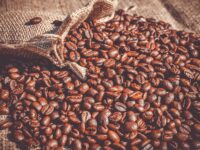The restaurant industry thrives from its promise of a sensory experience that enhances the consumption of food. Whether it be the ambient lighting, the flaming flat top grills visible behind the counter, or the aroma from the kitchen, these restaurants may truly be onto something. The intake of food often involves more than just taste, but also sensory stimuli, social factors, and psychological inclinations. An individual can effectively be influenced by the environmental ambiance surrounding a meal, creating nuanced eating patterns that are a part of everyday life.
In this culinary context, ambiance often consists of tastes, smells, colors, and, among other present stimuli, social pressures. These external stimuli inadvertently create a chain reaction within an individual’s psychological and physiological state, which may then influence consumption patterns. Unfortunately, the extremely nuanced and variable nature of these stimulated responses make studies difficult to control and validate.
The intake of food often involves more than just taste, but also sensory stimuli, social factors, and psychological inclinations.
Researchers commonly struggle to decide between using the artificial environment of controlled laboratory studies, or the more authentic, but less controlled, method of self-reported results in restaurants and homes. Furthermore, the complexity of how different people perceive and respond to stimuli increasingly complicates experts’ ability to pinpoint factors of causation and effect. Here, distinctions between appetite, hunger, and palatability are important. In many studies, experts designate appetite as a general feeling associated with an inclination to eat, whereas hunger presents as a physically irritating quality. Palatability measures the subjective, sensory enjoyment of food. Even with all of these complications, research on this topic continues, as it remains a valuable key in combating unhealthy eating tendencies that can lead to obesity and other health issues.
First and foremost, social circumstances can create emotional responses that manifest themselves in eating behaviors. Social facilitation occurs when the sheer presence of other people encourages greater, prolonged consumption. Many studies indicate that increased group size correlates positively with increased palatability and consumption. When surrounded by peers, people often have the inclination to eat impulsively, break regular eating patterns, and lengthen mealtime. On the contrary, other studies find that overall consumption and mealtime do not increase, indicating that research is still inconclusive.
Studies focused on culinary presentation yield similarly complex conclusions. An effective visual presentation of food, especially when combined with a sense of familiarity and subsequent expectation, often causes the brain to release a neurotransmitter called dopamine. This chemical induces sensations of pleasure and reward, and the resulting association of such sensations with food produces a greater inclination to eat. Prior knowledge of how the food tastes increases expectation, and can strengthen the physiological response. Many individuals increase consumption when the visual impression of the food is personally pleasing, but report no change in sense of fullness. The lack of fullness, even when overeating, may be concerning with respect to the rise in obesity. In a study using pizza, visual presentation alone augments appetite and salivation in overweight individuals and increases hunger in healthy individuals. It is this increase in casual appetite, regardless of hunger, that shows how trained chemical responses in the brain can increase consumption despite a lack of physical need.
Many individuals increase consumption when the visual impression of the food is personally pleasing, but report no change in sense of fullness.
Other visual stimuli, including interior design, contribute greatly to ambiance. Studies comparing psychological reactions to food in different venues propose that the preconceived notions that people have about a venue can affect palatability. Eating in a plain cafeteria seems to illicit less positive reactions to food quality than eating in an elegant restaurant, regardless of the actual food quality. Interior lighting may also influence eating patterns, in that a dimmer ambiance often results in impulsive, less restrained consumption. Moreover, the color of restaurant decorations and furnishings may influence hunger, thirst, and disposition. Adults typically prefer soft, subdued colors inside restaurants, which include calming cool hues, and stimulating warm hues. Even the color of food itself, particularly its increased variety, can escalate consumption; buffets exemplify positive correlation between appetite and color variety.
Last but not least, eating largely involves a sense of smell, the effects of which people often struggle to distinguish from taste. A scent can activate gastric secretion, and influence perceived taste and appetite. Studies demonstrate that a hungrier person perceives a better scent, and thus a better taste. Beyond analytics, the consumption of food is likely not a simple and unbiased decision process. Something other than taste makes us love our local eatery, even though it may lack a Michelin Star. A large part of life revolves around mealtime, so an enhanced understanding of its nuances can elevate our appreciation of the meals we make.
Nutrition (2004). DOI: 10.1016/j.nut.2004.05.012
International Journal of Obesity (2003). DOI: 10.1038/sj.ijo.0802391






